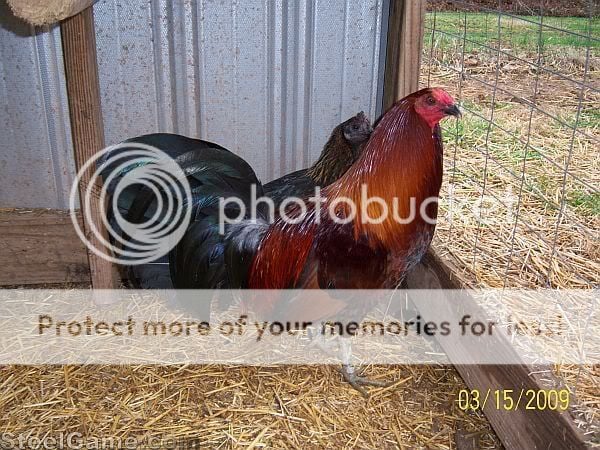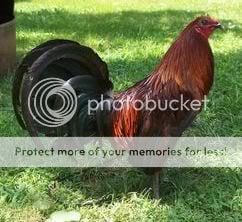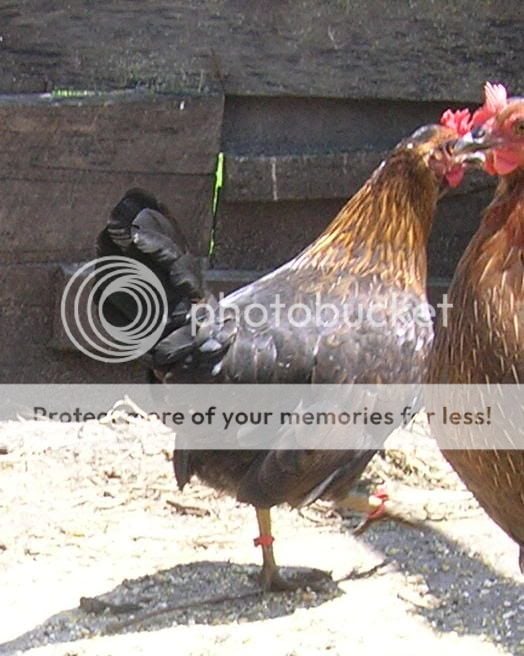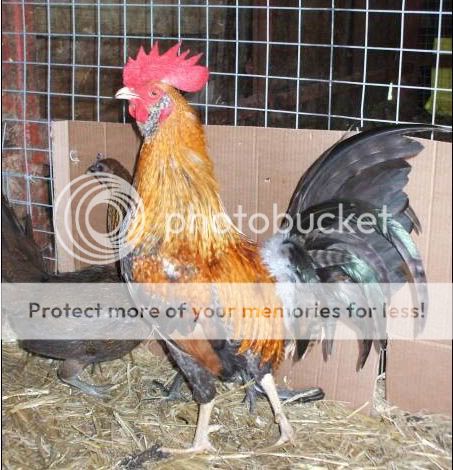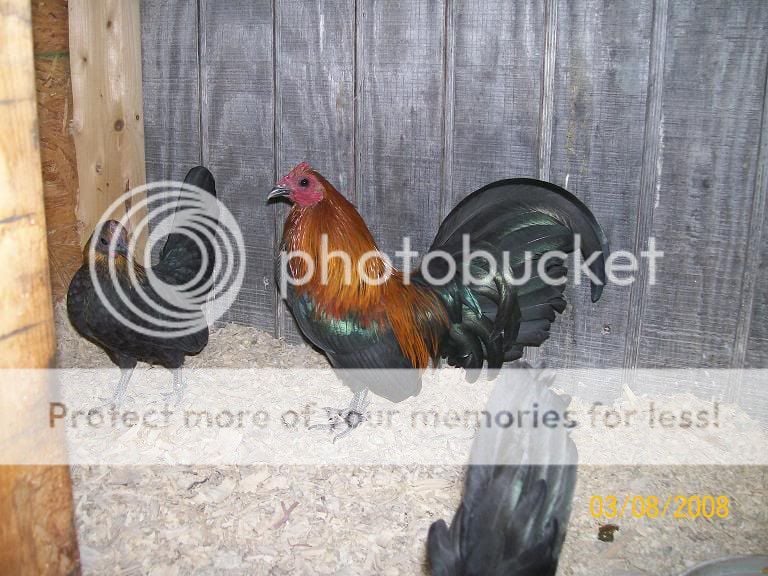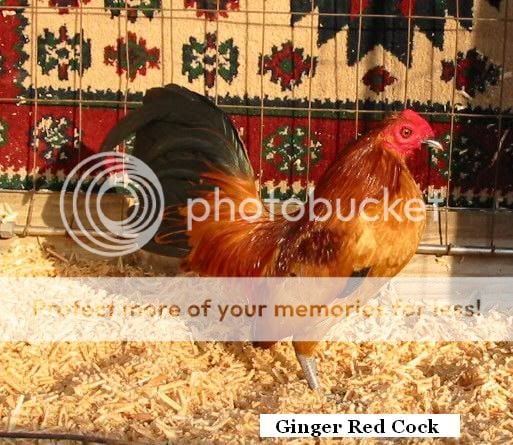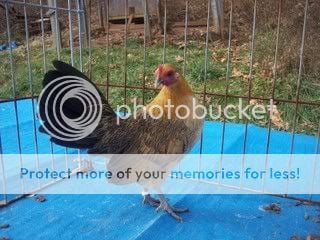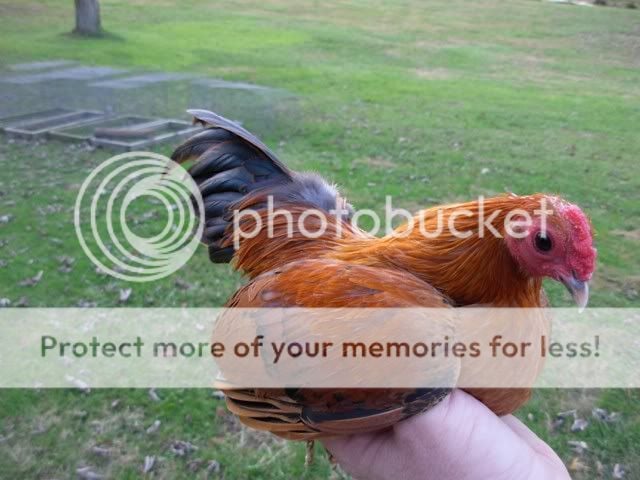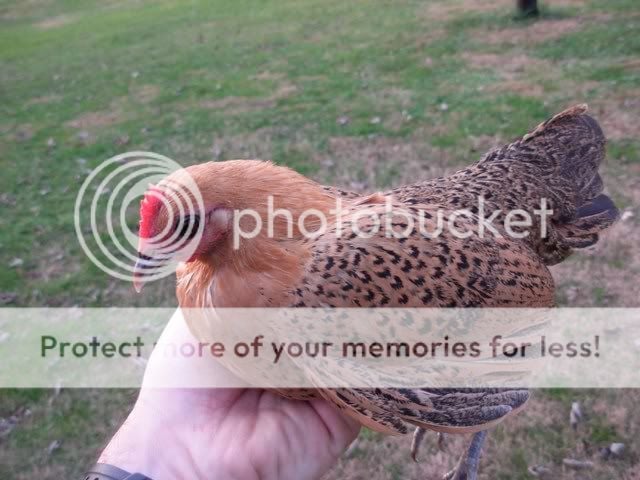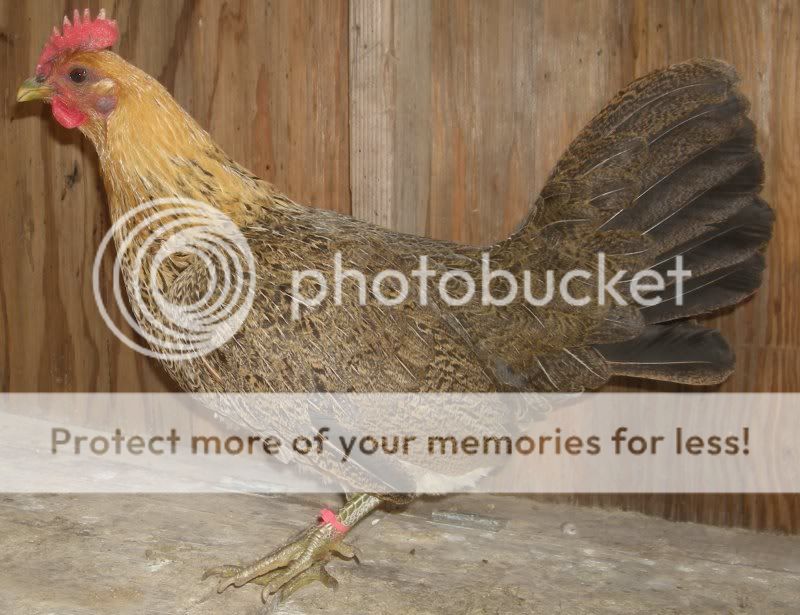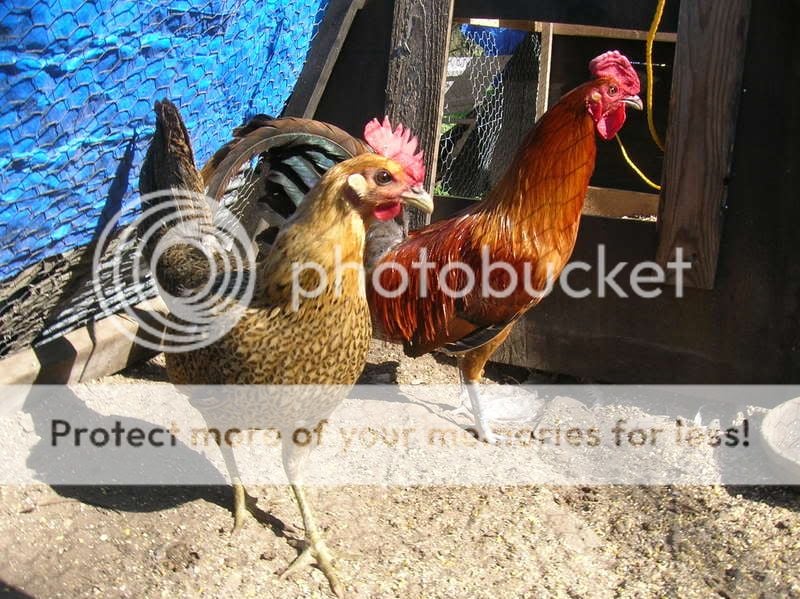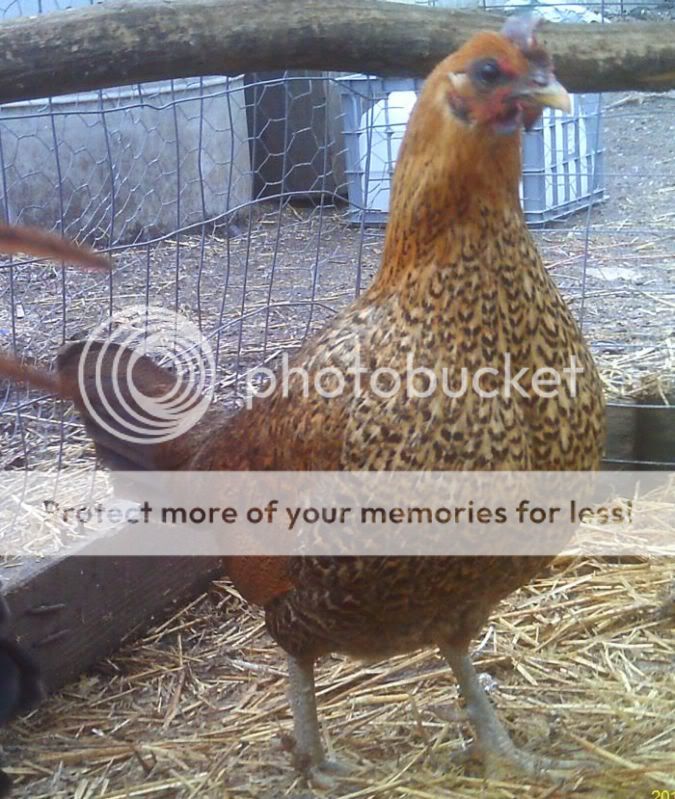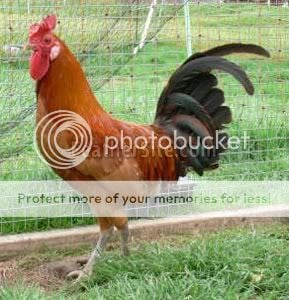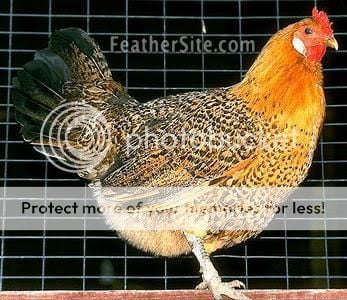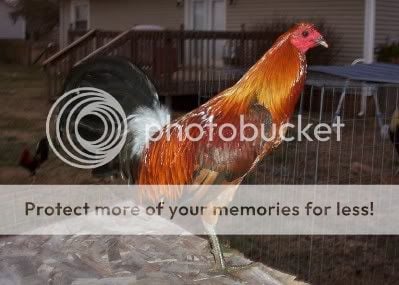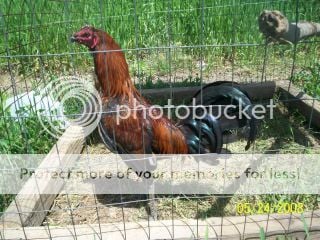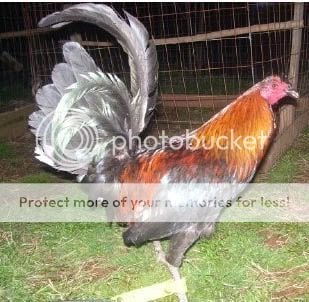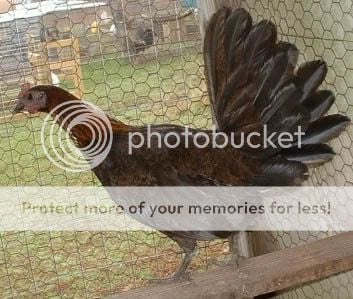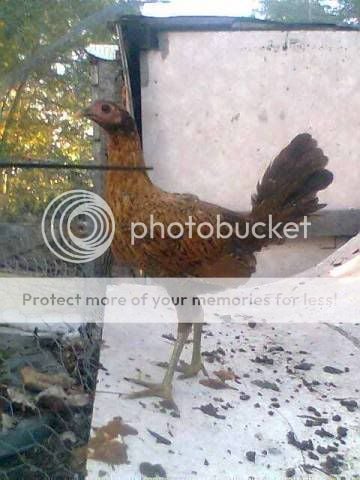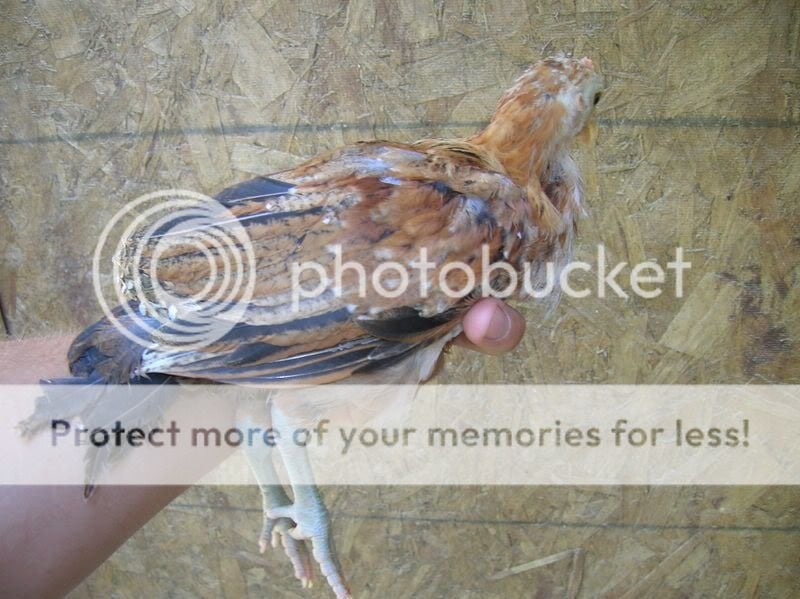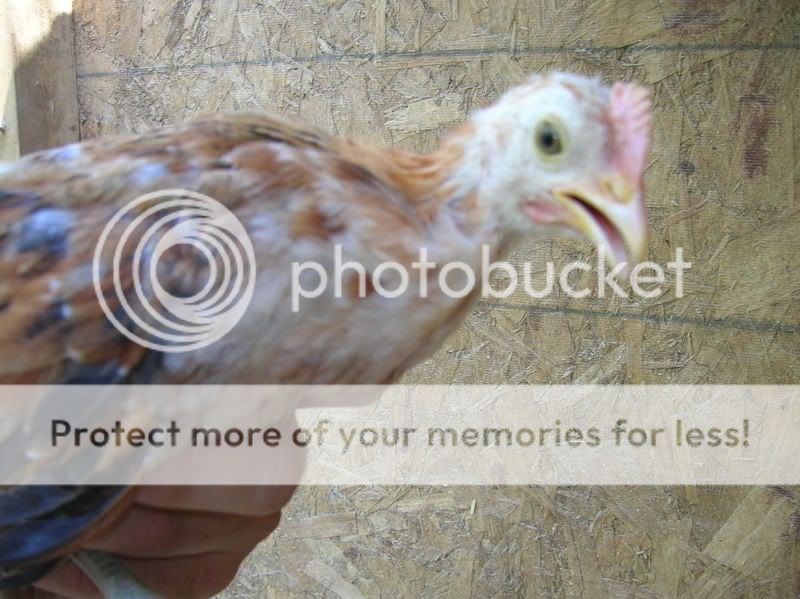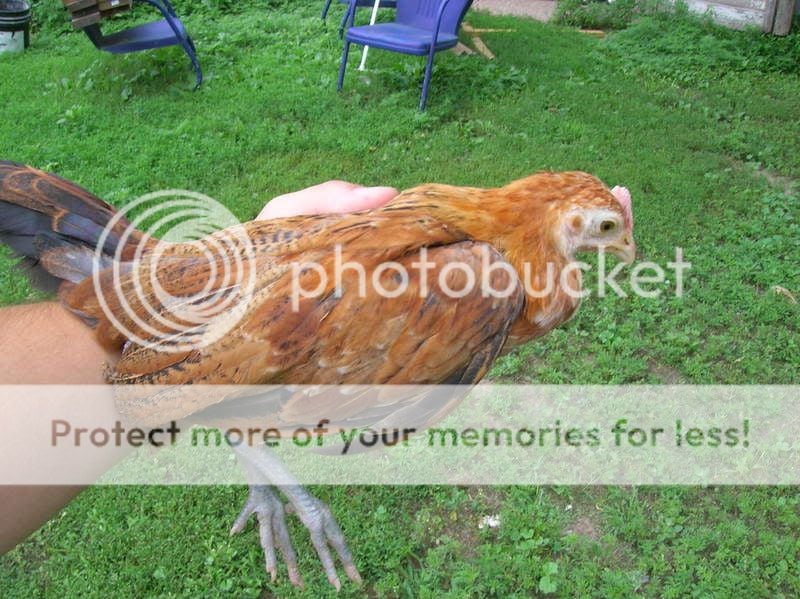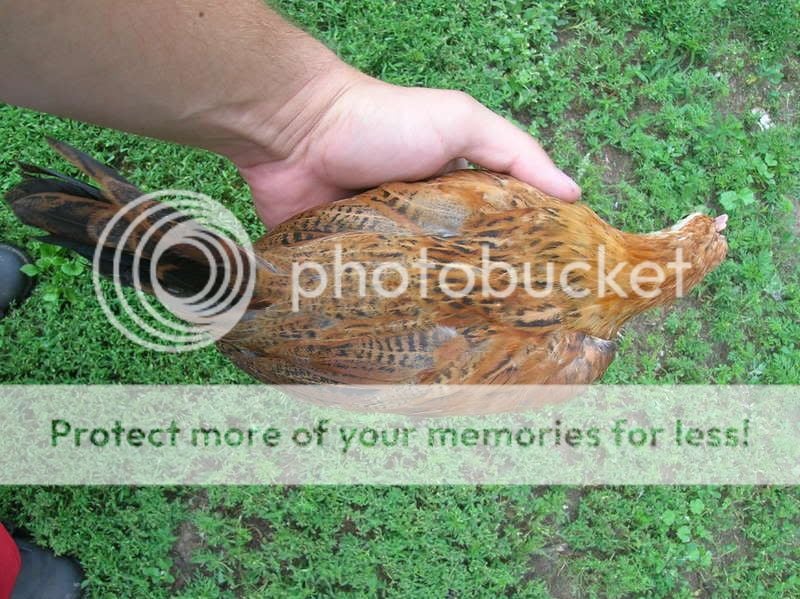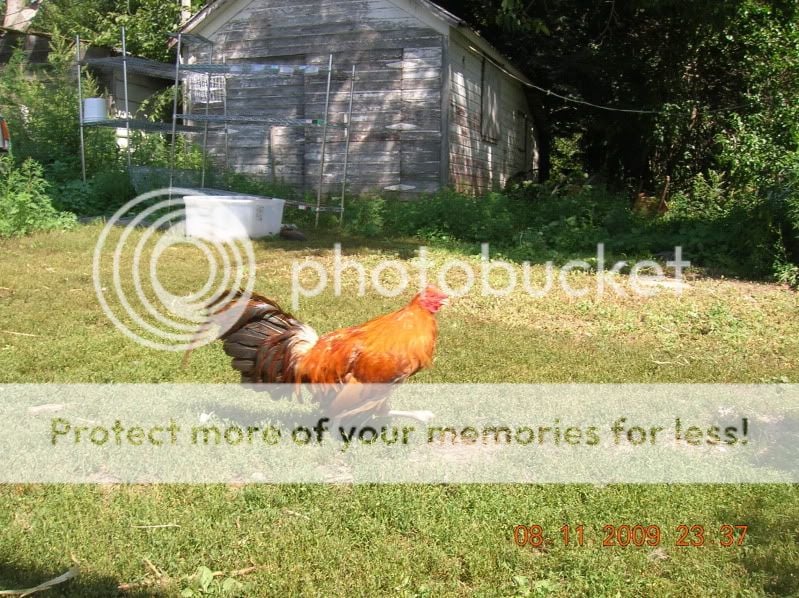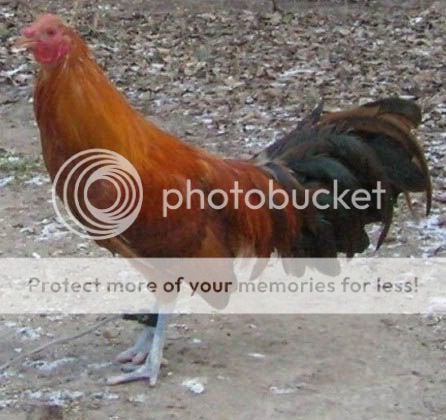another redquill hen:
bred by "borderline"
obviously gamefowl breeders don't pay as much attention to color as other poultry breeders, so to understand the genetics of this color you'd probably have to go outside the breed to find experts. one breed with the redquill pattern (sans the bronzing in the tail which is prized in gamefowl of this pattern) is the Sicilian Buttercup:
(feathersite)
(feathersite)
Foregoing that however we can draw some conclusions about how redquill works when looking at its crosses.
1/2 redquill 1/2 b.b. red (partridge)
bred by "rdcjunebug"
1/2 redquill 1/2 brown red
bred by "kodiak"
1/2 redquill 1/2 brownred
bred by "gamer1"
1/2 redquill 1/2 brownred
bred by "hosses 48"
3/4 redquill 1/4 brownred
bred by "borderline"
looking at the above birds it would appear that some of the components needed to make redquill are recessive. However even the 3/4 blood bird is not a perfect redquill and would need to be bred back to a redquill. Unfortunately I do not have the means to scan the printouts I made of an in depth discussion about redquill genetics on hand but the conclusion was that it was more than one recessive trait needed to create the redquill pattern in proper form.
to take a few points from that conversation:
"your first cross....will produce some brownred fowl but no redquills. no worry, just take the brownreds and breed to each other....only 1/16 (on the average) of those f2's will combine the necessary genes to look redquill."
he then went on to say you need the genes for birchen, buttercup, and dark brown to get good redquills. really wish I had a scanner as there's pics showing different chicks and what to look for in down color. suffice to say what you want for the chicks to look like is to look like the buttercup chicks. I have no idea on whether or not this is accurate myself.
Finally, some closing history from an article I found online a long time ago.
from the article, "Full Story of the Red Quills". This will help to partially show that brownreds and the Redquills have been linked a long, long time.
"Whilst on this subject of colours I would like to mention that in regard to "Gingers" there ahs often been a certain amount of misunderstanding as, generally speaking when 'North Country' breeders mention them, they are referring to a colour variety very rarely seen now viz: the Shady or Streaky breasted Ginger Red, which is as follows: The cock - face and eyes dark, neck hackle and saddle dark brassy or coppery colour, either in streaks, lacing or blotch markings, scapulas brown or dull copper colour, tail and wing bays black, legs and feet dark. The hen to match has legs, face and eyes dark, hackle deep golden with black striping, breast, body, and thighs black striped with brown and generally brown edging to feathers". <-- this supports the earlier article from the Oxford show stating that in some parts the Brown Breasted Brown Red was sometimes called Ginger. It could be partially why these two colors have been often intermingled (due to confusion of names).
"The breeders of the Midlands, Southern and Western counties and especially members of the Oxford Club, when discussing this colour, are referring to colour as seen in the Eslin Red Quills. The first importations of these were from Virginia about 1903 and although originally foundation stock had gone from Ireland to Virginia to the 'Eslin' family, the birds were now chiefly American breeding stock." <-- this is most likely a reference to the original Eslin stock, known as Red Horses. The Red Horses had yellow beaks and legs, which corresponds to the comment in the previous article (Old English Game......by Saltbox) which stated:
"There are, however, some beautiful gingers, not often seen at Oxford, but well known in the South of Ireland, which have yellow or light red eyes, yellow or carp legs. When first hatched they look like wheaton chicks, and when they first feather might be taken for brightly colored clays, but as adults the cocks are like cloth of gold, and the hens are almost as handsome, with bright yellow plumage evenly pencilled throughtout round each feather tip."
pics below are developmental pics of a "throwback" bird I raised from my redquills. My redquills had a recent infusion of some wheaton blood, so picture this bird with yellow beak and legs to get the idea of what Saltbox was describing:
The article "Full Story of Red Quills" goes on to say:
"The only other importation of Red Quills was made by that good sportsman Mr. H.B. Parsons of Ashford, Kent. This breeder made his original importation of Gingers in June 1907. They were of the old Columbus Eslin strain and were shipped over by Mr. R. A. McIntyre of Warrenton of Virginia viz; fine hens and one cock, these birds were descendants of stock exported to Virginia from Ireland in 1856 and again in 1873.......A leading feature of the old time pure stock has always been their large prominent black eyes, abundant feather and extra strong quills in tail feather, in which much red pigment shows."
"....a copy of a letter from Mr. McIntyre to Mr. H. B. Parsons Esq., dated June 1907, in regard to Mr Parsons importation from him of the first Gingers Mr Parsons had and which he has kept pure since......
My Dear Sir,
Last Monday I sent you via American Express prepaid to New York, 5 hens and a cock as follows in large coop
Hens:
No. 1 a Brown Red (light) with copper legs.....No.2 Black Brass Neck, copper legs.....No. 3 same colour as No. 2.....No. 4 a large Brown Red, dark eyes.....No. 5 A Brown Red showing white splash on back....Nos 1,2,3,4,5 are sisters......The cock (sent in seperate coop) is of the same blood on his mothers side, as the five hens. His father was a famous Ginger Red Cock ....bred by...Columbus Eslin, who died two years ago."
The point at which Eslin died is important to note because the Eslin Redquills had only been in development for those two years prior to his death. Fact of the day: they were developed in Washington, D.C.
"The cock I sent you is a seven pound Brown Red, with green legs and black eyes."
So all the birds sent to Parsons were brown red in color, and yet he produced gingers/red quills out of them. This again points to the genes being recessive.

